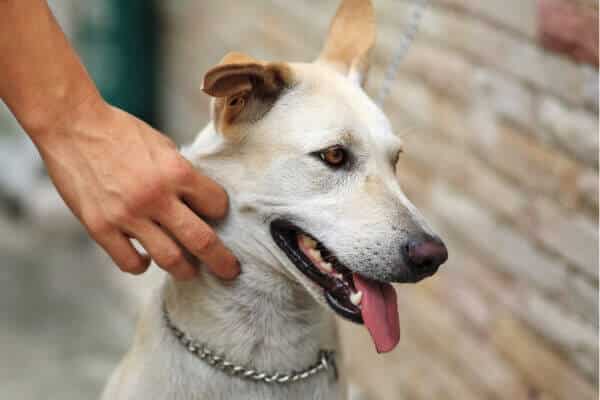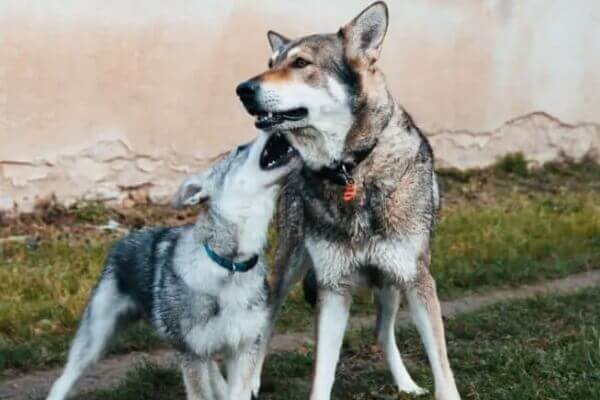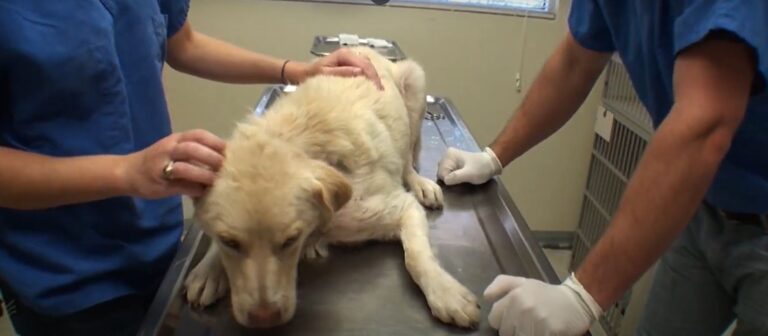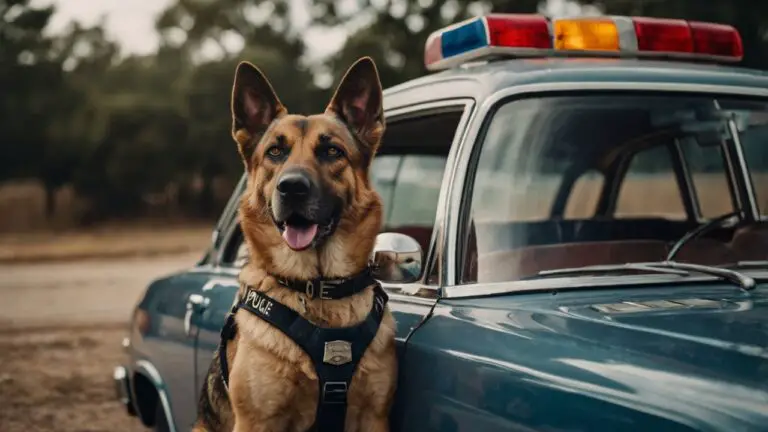Grabbing Your Dog By The Scruff: Dangers, When To Stop, And Scruffing for Discipline

For centuries, the act of grabbing a dog by the scruff of its neck—a loose thick skin behind a dog’s neck, has been perceived as a means of control and discipline. Some dog owners often mother dogs mouth-carry their puppies by their scruff and may try to mimic this behavior, but is grabbing a dog by the scruff appropriate?
The answer is a resounding no. While scruffing may appear to mimic natural mother dog-puppy behavior, humans may not be perfectly able to carry a dog this way because they are not naturally inclined to do so. Grabbing a dog by the scruff can cause physical pain, potential injuries, and emotional or psychological trauma and therefore should not be practiced. There are unique ways to pick up a dog without grabbing them by the skin.
Instead of resorting to scruffing as a disciplining technique, dog owners should explore alternative, humane training techniques. Positive reinforcement training, which focuses on rewarding desired behaviors rather than punishing unwanted ones, is widely regarded as the most effective and ethical approach to dog training. By using treats, praise, and consistent training methods, we can encourage our dogs to exhibit desired behaviors while building a strong and trusting relationship based on mutual respect.
Jump to Section
What Does It Mean To Scruff A Dog?
To “scruff” a dog refers to the act of grabbing the loose skin on the back of a dog’s neck, typically using a firm yet gentle grip. This technique is often used by dog owners, trainers, and veterinarians to gain control over a dog or to redirect their attention.
Scruffing is based on the natural behavior of mother dogs who pick up their puppies by the scruff of their necks to carry them. When a dog is scruffed, it triggers an instinctual response that temporarily immobilizes them. This is because scruff is an area where the skin is looser and more elastic, allowing for a secure grip without causing discomfort or injury.
Does It Hurt Dogs When You Grab Them By The Scruff?
Imagine someone lifting you by grabbing the flesh located at the back of your neck; this is how scruffing feels to dogs, especially large adult dogs. The loose skin on the back of a dog’s neck where the scruff is located, is quite sensitive and can cause tingling sensations for them. When a dog is grabbed forcefully by the scruff, it can cause discomfort like bruising.
Although some people believe that scruffing mimics how a mother dog carries her puppies, it’s important to recognize that there can be potential risks involved.
1. Pain and Physical Discomfort
Scruffing can cause pain and physical discomfort for the dog. The loose skin at the back of the neck is sensitive, and forcefully gripping or pulling it can lead to discomfort, bruising, or even injury. Dogs have a well-developed neck structure designed to support their heads and absorb shocks naturally, but scruffing disrupts this balance and can lead to strain or pain.
2. Distrust And Behavioral Problems
Scruffing can damage the trust and bond between a dog and its handler. Dogs are highly perceptive and can associate scruffing with negative experiences, leading to fear, anxiety, or aggression. It can erode their confidence and make them feel threatened or defensive, resulting in behavioral issues or a breakdown in the human-dog relationship.
3. Potential Injuries
Rough scruffing can cause injuries beyond physical discomfort. Forceful handling of the scruff may result in damage to the skin, including lacerations or tears. Moreover, some dogs have a higher risk of developing skin problems or dermatitis due to excessive scruffing, as it can irritate the skin and disrupt the natural balance of oils.
Is Scruffing A Puppy Abuse?
Whether or not scruffing a puppy is considered abuse is a topic of debate among experts and dog owners. While some argue that it can be a form of physical and psychological harm, others believe that when done appropriately and in certain situations, it may serve as a temporary and minimal aversive technique.
Scruffing a puppy can cause discomfort, pain, and stress, especially if done forcefully or excessively. It can potentially lead to physical injuries and have negative psychological effects on the puppy, including fear, anxiety, and a breakdown of trust. Many professional dog trainers and behaviorists discourage the use of scruffing as a training technique and advocate for positive reinforcement-based methods that focus on rewards and building a trusting relationship instead.
However, it’s essential to consider individual circumstances and the intention behind the action. Some dog owners argue that in specific situations, such as emergencies or in cases where the dog’s safety is at immediate risk, a controlled and brief scruffing may be necessary as a last resort. Nonetheless, it’s crucial to prioritize the well-being and comfort of the dog and seek alternative, positive reinforcement-based methods for training and handling whenever possible.
When To Stop Grabbing A Dog By Scruff
While grabbing a dog by scruff may be appropriate for mother dogs with their puppies, it is not recommended for humans to do so in most circumstances. Grabbing a dog by the scruff is wrong and any dog owner involved in this act should desist from it immediately even though your canine is still in puppyhood. As dogs grow older, scruffing even becomes less bearable for dogs because their weight increases, and they develop stronger musculature and thicker skin around the neck area. This makes the scruff grab technique less effective and uncomfortable for adult dogs.
Using the scruff grab on adult dogs can cause pain, fear, and distress, potentially leading to negative consequences such as aggression or a breakdown of trust between the dog and the person. Dog owners should remember that their dogs are sensitive creatures and should be treated with respect and kindness.
If you have been using the scruff grab technique for disciplining or training your adult dog, it is advisable to transition to positive reinforcement training instead and seek the guidance of a professional dog trainer or behaviorist. They can provide you with appropriate training techniques and help address any behavioral concerns you may have.
How Do You Pick Up A Puppy Without Hurting Them
When picking up a puppy, there is a need to prioritize their safety and comfort. Start by assessing the puppy’s size and temperament. Puppies are smaller and more delicate, so handle them with extra care. Approach the puppy calmly, speak in a soothing tone, and allow them to become familiar with your presence before attempting to pick them up.
To lift the puppy safely, position yourself in a stable stance with your feet shoulder-width apart. Wrap one arm across the puppy’s front, supporting their chest in front of their front legs but below their throat then use your other arm to support the puppy’s rump by reaching around their back legs. This grip offers additional support and stability during the lift.
Once you’re properly positioned, lift the puppy smoothly and gradually. Engage your leg muscles for strength and ensure a secure hold, but avoid any sudden or jerky movements. Keep the puppy close to your body to provide a sense of security. Also, pay close attention to the puppy’s body language and reactions throughout the process.
By following these steps, you can safely pick up a puppy without causing any harm or distress. Remember to approach each puppy with patience and adapt your technique to their individual needs.
Should I Scruff A Puppy For Discipline Or Training?
Scruffing a puppy for discipline, training, or even biting is not advisable. While it is true that mother dogs may use the scruffing technique with their puppies, attempting to replicate this behavior as a human can have negative consequences. Scruffing can cause discomfort, fear, and stress in puppies, potentially leading to increased aggression or anxiety. It is not an effective or humane method of discipline or training.
Positive reinforcement-based training methods are widely recommended for puppies. These techniques focus on rewarding desired behaviors rather than punishing undesirable ones. By using rewards, such as treats or praise, to reinforce good behavior and redirect the puppy’s attention to appropriate activities, you can effectively teach them what is expected of them. Consistency, patience, and clear communication are key elements of successful puppy training.
If you are struggling with a puppy’s training or excessive aggression, it is advisable to seek guidance from a professional dog trainer or certified behaviorist who can provide expert advice and tailored training plans that are both effective and kind to the puppy.
Dog Yelps When Grabbed By Scruff
Yelping when grabbed by the scruff can be an instinctual reaction triggered by the sensation of pressure or discomfort. Dogs have a complex nervous system that registers touch and pain, and the scruff area can be particularly sensitive. The sudden force applied to the scruff might cause discomfort, leading the dog to vocalize as a way to communicate distress or seek relief from the pressure.
It is also worth noting that not all dogs will yelp when grabbed by the scruff, as individual sensitivity levels can vary but it’s not advisable to put your dog through all that pain.
Does Pulling A Dog With A Leash Hurt His Neck?
Pulling a dog with a leash can potentially hurt their neck if excessive force or improper techniques are used. The neck area of a dog is delicate and sensitive, housing important structures such as the spine, nerves, and blood vessels. When a leash is abruptly yanked or excessive pressure is applied to the neck, it can result in discomfort, pain, bruising, lacerations, or even damage to the cervical vertebrae.
The most common concern regarding neck injuries in dogs is related to the use of choke collars or prong collars. These types of collars are designed to tighten or exert pressure when pulled, potentially causing harm to the dog’s neck.
When using a leash, one should avoid sudden or forceful tugs. Instead, use gentle, gradual pressure and reward-based training techniques to guide and communicate with your dog.
Final Thoughts
Grabbing your dog by the scruff is a risky behavior that should be avoided. While it may have been a common practice in the past, we now know that it can cause physical and emotional harm to your furry companion. Dogs have evolved, and their needs and behaviors are better understood today. Physically restraining a dog by the scruff can lead to pain, injury, and distress, as it goes against their natural instincts and may trigger fear or aggression.
As dog owners, you should recognize the signs of stress or discomfort in your dog and find positive and effective alternatives for discipline. Punishment-based methods, such as scruffing, can damage the trust and bond between you and your pet, making it harder to establish a healthy relationship based on mutual respect and understanding. Instead, focus on positive reinforcement techniques that reward good behavior, such as treats, praise, and play. Training and socialization classes can also provide valuable guidance in teaching your dog appropriate behaviors.
Remember, every dog is an individual, and their responses may vary. By understanding your dog’s instincts, providing proper training and care, and using positive reinforcement methods, you can create a safe and harmonious environment that nurtures your dog’s well-being and strengthens your bond for years to come.
Read related posts about





